#attachment by edwin landseer
Text


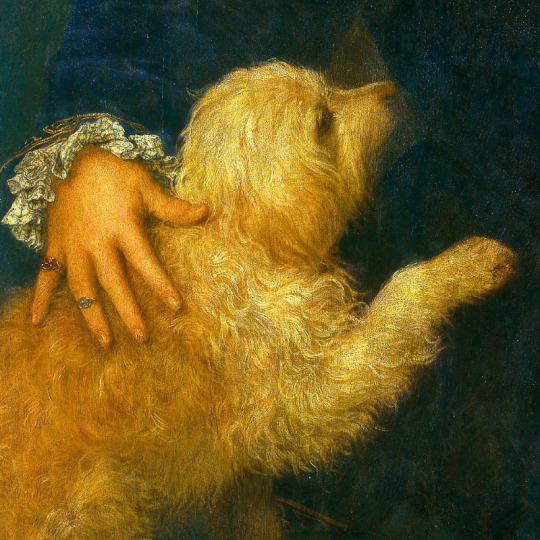



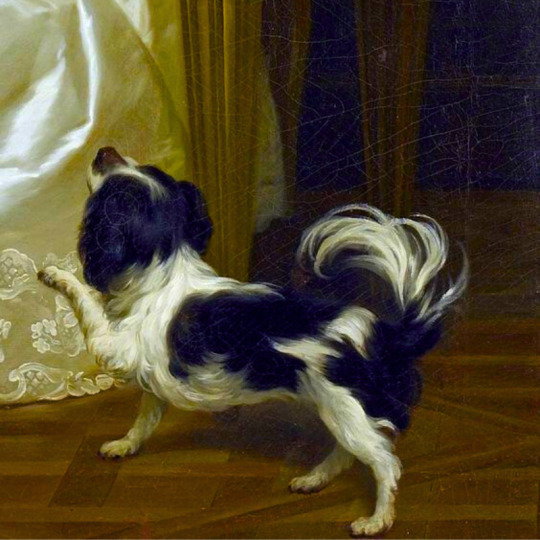
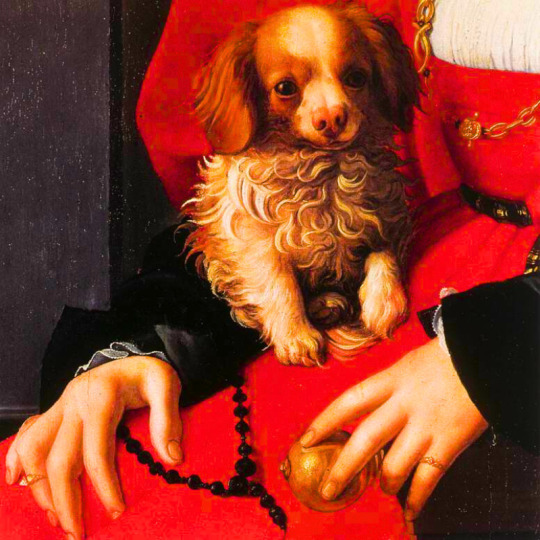
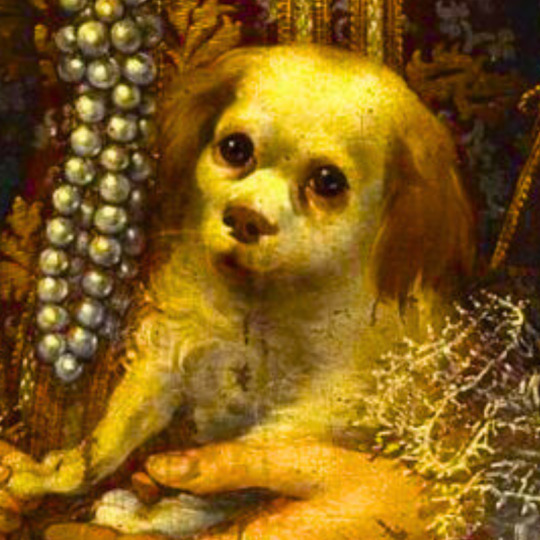

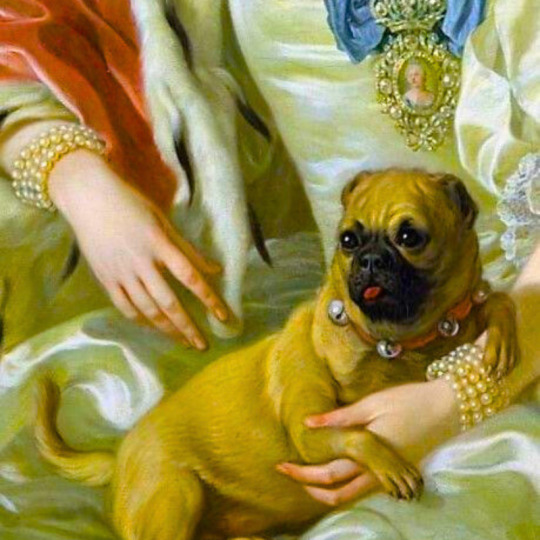
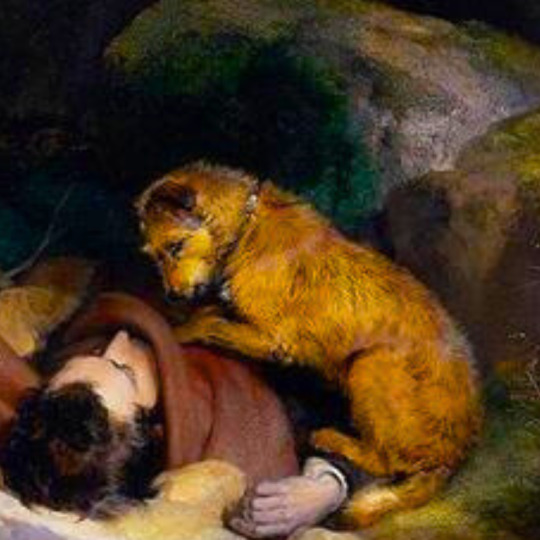
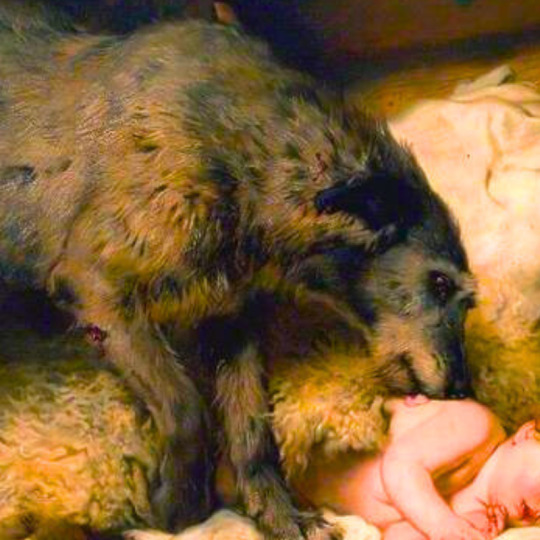




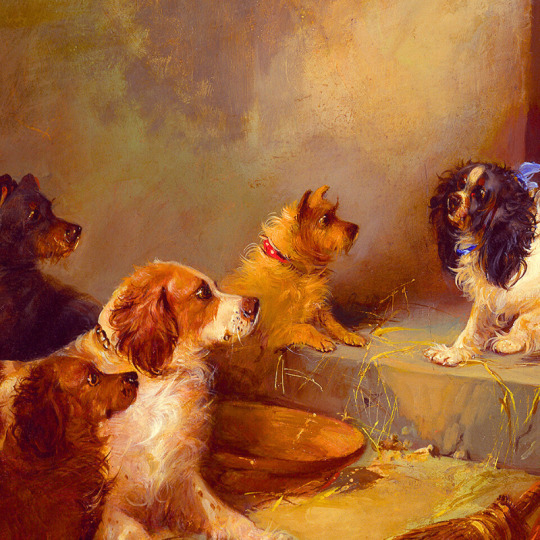
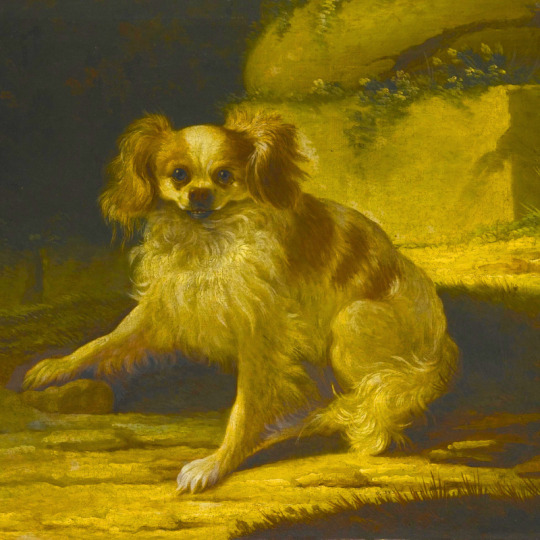


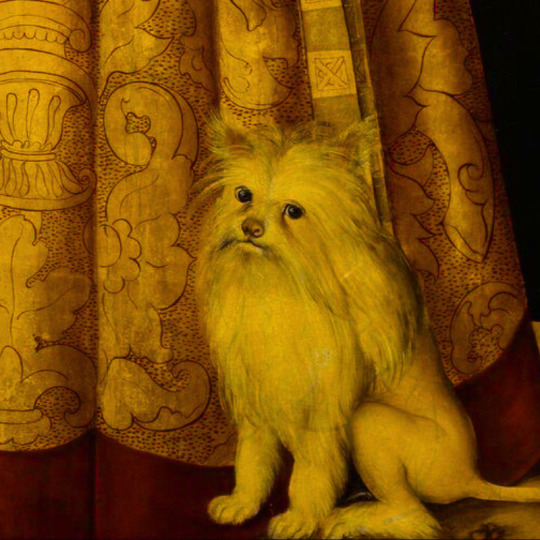
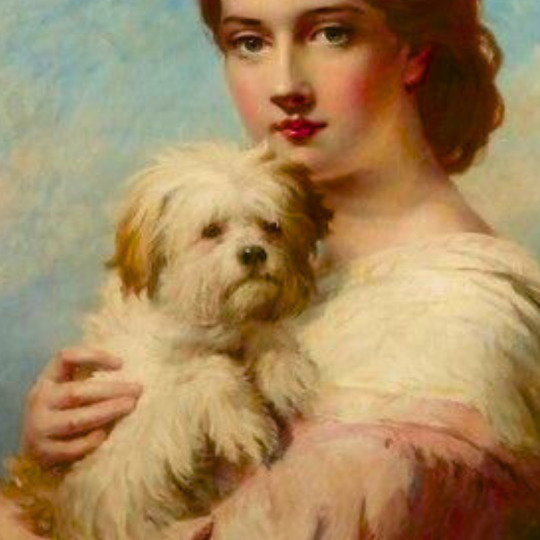
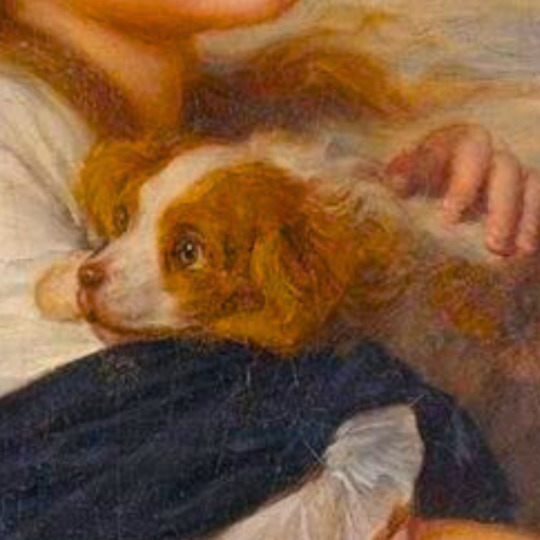

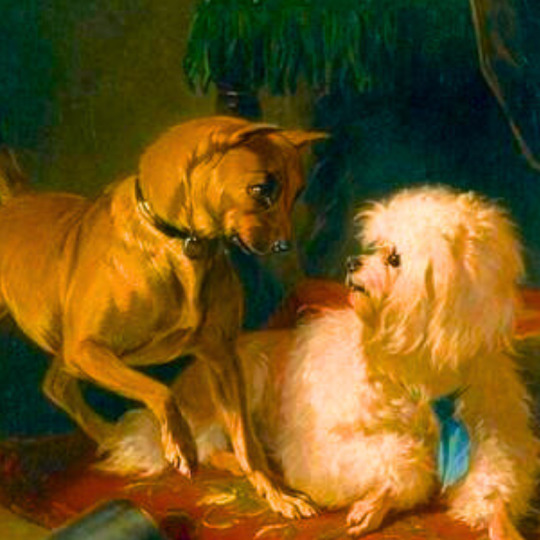


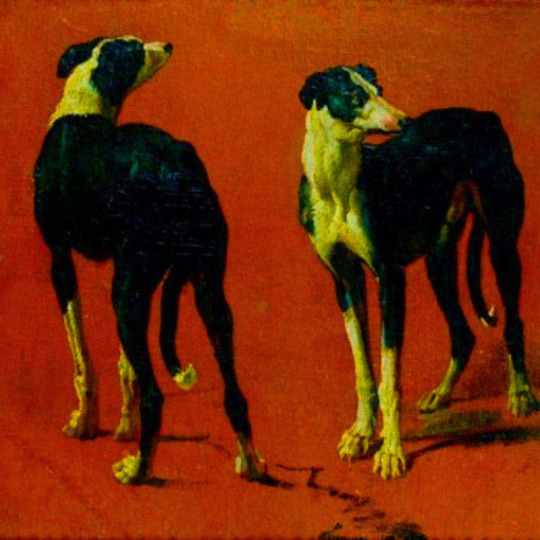

dogs + art
#mars and venus with cupid and a dog by paola veronese#venus of urbino by titian#portrait of federico ii gonzaga by titian#the death of procris by piero di cosimo#arnolfini portrait by jan van eyck#venus and adonis by titian#portrait of the countesse d'egmont pignatelli in spanish costume by alexander roslin#portrait of a lady in red by agnolo bronzino#maselli family portrait by lavinia fontana#children of the marquis de bethune playing with dog by francois hubert drouais#portrait of princess ekaterina dmitrievna golitsyna by louis-michel van loo#attachment by edwin landseer#gelert by charles b. barber#the poor dog the shepherd's grave by edwin landseer#requiescat by briton riviere#marie leszczinska#my lady's pets by arthur wardle#the great debate by george armfield#portrait of a brown and white toy spaniel in a landscape by jacques-charled oudry#darby in his basket kennel by anthony frederick sandys#portrait of john 3rd baron monson of burton by pompeo girolamo batoni#portrait of dutchess katharina von mecklenburg by lucas cranach the elder#young lady and her dog by james john hill#young girl with a spaniel by jean-baptise greuze#the masters chair by john henry dolph#interior with two dogs by conradijn cunaeus#no walk today by wright baker#painter's studio by otto erelman#study of greyhounds by alexandre-francois desportes#sitting pretty by horatio henry couldrey
189 notes
·
View notes
Text
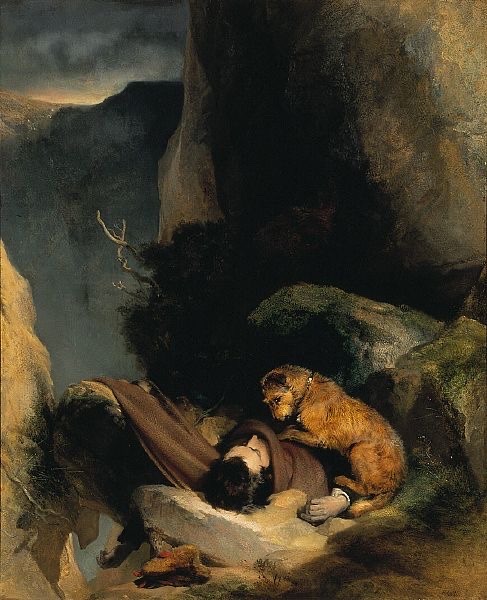

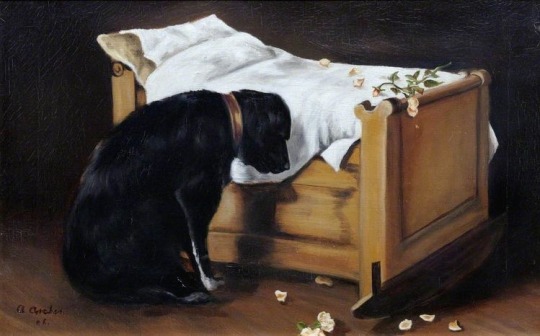
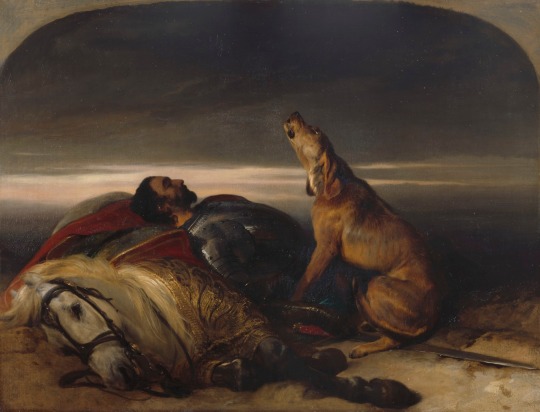
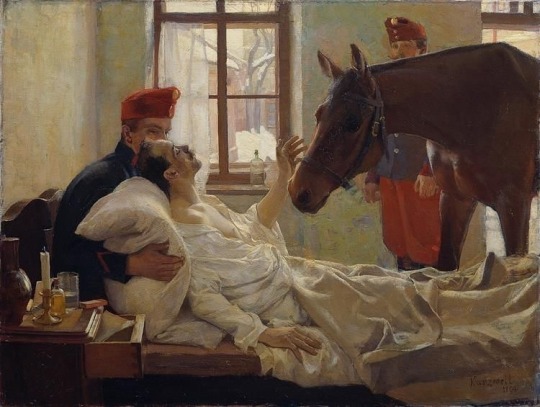
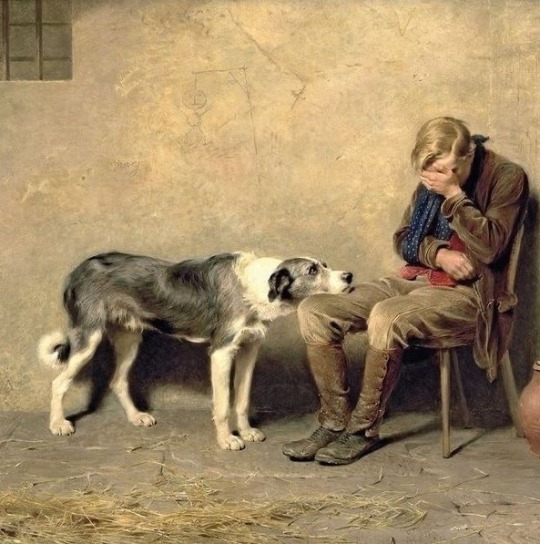
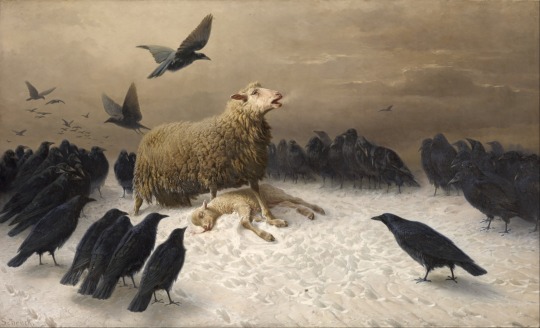
Attachment (1829) by Edwin Landseer | Requiescat (1888) by Briton Rivière | A Dog Mourning Its Little Master (1866) by James Archer | The Faithful Hound (ca. 1830) by Edwin Landseer | Ein Lieber Besuch (1894) by Max Kurzweil | Fidelity (1869) by Briton Rivière | Angoisses (1878) by August Friedrich Schenck
#animalism#painting#artwork#art#briton rivière#edwin landseer#max kurzweil#august friedrich schenk#just some sad paintings of animals
66 notes
·
View notes
Text

attachment, by edwin henry landseer, 1829
10 notes
·
View notes
Text

Attachment (1829) by Edwin Landseer
5 notes
·
View notes
Text
"The Polar Bears made me do it”
Welcome to another episode of SNACKS (Some New Academic Centric Knowledge Snippets).
In the Royal Holloway, University of London Picture gallery, there sits an Edwin Landseer painting of two polar bears tearing apart a fallen ship's mast with the title "Man Proposes, God Disposes." This painting is based on the Lost Arctic Expedition of Captain Sir John Franklin, where his two ships, the HMS Erebus and HMS Terror, became icebound somewhere north of Canada and disappeared. (For other depictions of the HMS Terror, check on Dan Simmon's Novel and the AMC series it inspired. For other fictionalized Arctic Expeditions, check out Transformers (2008).)
Not only does this painting have an insane title, it also has an interesting urban myth attached to it. The Royal Holloway college holds exams in its picture gallery, and according to legend a student in the 1920s or 30s sitting near the painting stabbed themselves in the eye with a pencil after writing the words "The Polar Bears made me do it" on their exam paper. In the 1970s, the painting was hastily covered with a Union Jack during exam hour to ease the students' fears about the supernatural nature of work, which has become a tradition ever since, because nothing covers up a history of death and violence quite like the symbol of the British.
2 notes
·
View notes
Note
Actually the Saint Bernard+ alcohol is a myth and never happened irl: We all thought it was real because a bunch of painters, the first being Edwin Landseer in 1820, started to represent them like that. Caskets of alcohol would have been too heavy for them anyway. But they did carry food, mainly to Napoleon soldiers in the 1800 who were like tired out on the top of a mountain, so just picture a soldier getting like a peach from such a massive dog.
AWWWW A PEACH that's so cute! I love St. Bernards. That's interesting, too. I think I remember hearing waaaay back that it was a myth but not the whole deal!
I LOVE @sammysdewysensitiveeyes and @mcnomaniametus ideas1 though:
"Pyro is surprised and oddly touched to see that Sebastian has a dog following him around. "Perhaps the old bastard has a heart after all." But no, the dog just has a cask of whiskey attached to it's collar."
"//i pictured Shaw with a little cask around his neck being sent out to find avalanche victims, then finding them half buried in snow like "Well. Pick yourself up and be quick about it." As he takes a drink for himself. Sebastian 'no handouts' Shaw strikes again xD"
BOTH OF THESE ARE EVERYTHING, I LOVE THEM!! PERFECT!! XDD
4 notes
·
View notes
Text

Attachment, 1829
~Edwin Landseer (1802-1873)~
22 notes
·
View notes
Photo

"Attachment" My first oil painting as a master study of Edwin Landseer's work by the same title. It has always been one of my favorite paintings, and it was such a learning experience. I painted it with me and Teddy in the picture with numerous items that are sentimental to me like my white jacket and red scarf.
#attachment#Edwin landseer#oil painting#teddy#Pomeranian#death#rocks#landscape#traditional#master study#Wolftrest
5 notes
·
View notes
Photo
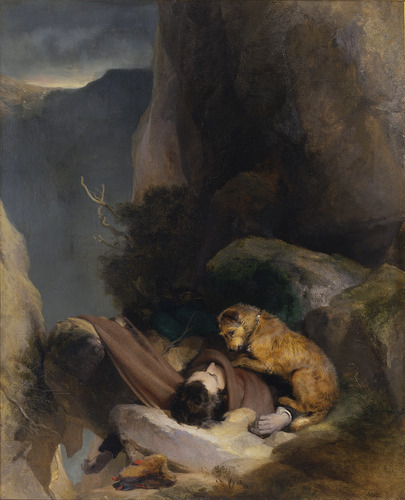
Attachment, Sir Edwin Henry Landseer, 1829, Saint Louis Art Museum: Modern and Contemporary Art
https://www.slam.org/collection/objects/16006/
109 notes
·
View notes
Photo
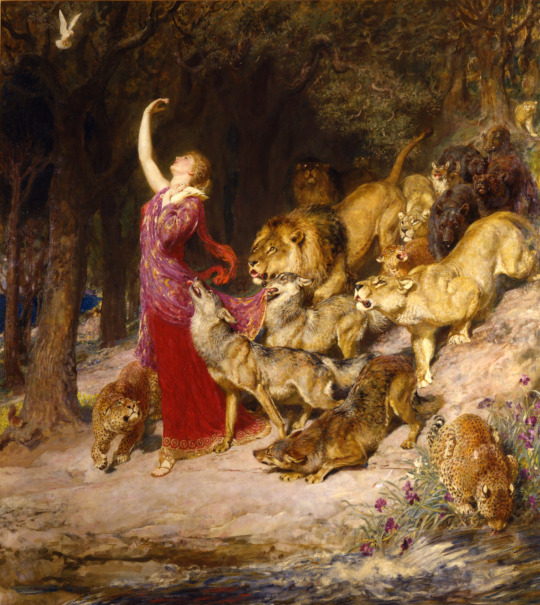
~ Best known as an animal painter, Briton Riviere was considered the successor to Britain’s great animalier Sir Edwin Landseer. Throughout his career, he painted contemporary genre, classical, and biblical themes, invariably involving animals, which proved extremely popular during the heyday of late Victorian classicism. Aphrodite is a compelling example of Riviere’s work; a scene showing the goddess of love and beauty surrounded by a group of wild animals, seemingly under her spell. Unlike most painters, he did not focus on the subject’s erotic potential, but chose an unusual scene derived from a Homeric hymn - 8th-6th centuries BC. A label written by the artist is attached to the reverse of this painting, and contains the specific verse: “There clad herself in garments beautiful | The laughter loving goddess. Gold-adorned She hasted on her way down Ida’s Mount, Ida, the many-rilled, mother of wild beasts And in her train, the grey wolf and the bear, the keen eyed lion and the swift footed pard, that hungers for the hind, all fawning came”. 1902, oil on canvas, Dahesh Museum of Art.Known above all as an animal painter, the academic Briton Rivière was considered the successor of the great British animalier Sir Edwin Landseer. During his career, he painted contemporary subjects of gender, classical and biblical, invariably involving beloved animals, which thus became extremely popular during the golden age of late Victorian classicism. Aphrodite is a compelling example of Riviere's work. A scene that shows the goddess of love and beauty surrounded by a group of wild animals, apparently under her spell. Unlike most painters, he did not focus on the subject's sensual potential, but chose an unusual scene derived from a Homeric anthem - from the 8th-VIII centuries BC. A postcard written by the artist is placed on the back of this of pinto and it contains the specific verse: “And it came to Ida irrigating of springs, feeder of fairs, and to the stable moving, straight up the mountain; and against her, wagging, wolves, lions with fiery eyes, bears, fast panthers, who never get enough of checkers, mosser. The Diva shook the fairs, her heart was glad, and infused to all that in the chest the lust of love; and jacquard all in pairs to enter the shady dives. ~
3 notes
·
View notes
Photo

Attachment by Sir Edwin Henry Landseer // “The Challenge” by Christine McVie
#fly art#christine mcvie#the challenge#1984#please don't remove caption#my first ever edit for this song! it's a bop
10 notes
·
View notes
Photo

Edwin Henry Landseer (English, 1802-1873) - Attachment, 1829
21 notes
·
View notes
Photo

Charles Gough (1784- April 1805) was an artist, insignificant in his time. He became more famous after his death which was immortalized by leading poets and artists of the period. He took his dog, Foxie, for a walk over Helvellyn and was never seen alive again. Three months later, July 27th, his body was found by a shepherd. Foxie was still barking, still next to Gough’s remains. He had fallen to his death during his walk. Many artists were enamored by the idea of the faithful canine at his dead master’s side and made very poignant, romantic pictures of the event. In truth, the dog had eaten Gough to a perfect skeleton during the interval.
(painting: Attachment by Edwin Landseer, 1829)
2 notes
·
View notes
Photo

History Behind the Story - Dash
In this week’s episode of ITV’s Victoria we said goodbye to Dash, Queen Victoria’s beloved King Charles Spaniel.
Read more about Victoria’s relationship with her favourite pet under the cut.

“Dash from nature” sketched by Princess Victoria, 9th February 1834. (Royal Collection)
After dinner I played with little Dash at ball, he bounded on all fours to run after it, bringing it back at full gallop, and screamed to get it while I held it in my hand.
- Queen Victoria’s journal, 19th January 1833
Dear Dash is a darling dog. His ears are grown so long and so curly and he is such a beauty. He is so attached and so merry too.
- Queen Victoria’s journal, 5th April 1834
Queen Victoria loved animals, but none more so that her first pet dog - a tricolour Cavalier King Charles Spaniel named Dash. He had originally been gifted to Victoria’s mother, the Duchess of Kent, but he and the thirteen-year-old Princess Victoria quickly became inseparable.
Victoria and her ‘dear sweet little Dash’ walked together in Kensington Gardens and played together in the evenings. She dressed him up like one of her dolls (‘in a scarlet jacket & blue trousers’), and when she learned to paint in oils Victoria chose as her first subject ‘dear Dash in his uniform’.
She made sure he had his own presents for Christmas (‘a basin of bread and milk, three Indian-rubber balls, and two bits of gingerbread surrounded with branches of holly and candles’), and for her sixteenth birthday Victoria received from ‘Dashy’ an ‘ivory basket with barley-sugar and chocolate’. When Victoria went sailing on the Isle of Wight, Dash ‘instantly plunged into the sea & swam at least ten yards after the boat’, unable to be separated from his beloved mistress.

An 1860s copy of an original portrait painted by George Hayter of the Princess Victoria for her uncle Leopold in 1833. The spaniel playfully holding Victoria’s glove is most probably her beloved Dash. (Royal Collection)
When Queen Victoria ascended the throne in 1837, Dash moved with her to Buckingham Palace. ‘Dear Dashy’, she reported in her journal, was ‘quite happy’ with his new living arrangements. On her coronation day, Victoria rushed home after the grueling five-hour ceremony in order to give Dash his bath. He was soon sitting in on her meetings with her Prime Minister, Lord Melbourne:
Dash, who I brought in with me, as soon as we sat down ran up to Lord Melbourne with the greatest friendliness and licked his hand, which quite surprised me, considering the great dislike Dashy has for strangers.
Queen Victoria was always mindful of what Dash thought of other people. He was evidently a good judge of character - he seemed to like Prince Albert as well. When Victoria first met her future husband in 1836 she recorded happily how Albert would to ‘play [with] and fondle Dash so funnily’.
Dash died on Christmas Eve 1840, a month after the birth of Victoria’s first child. It was in many ways the symbolic end to her childhood. She wrote in journal:
Albert told me that poor dear old "Dash", was dead, which grieved me so much. I was so fond of the poor little fellow, & he was so attached to me.
He was buried in the grounds of Windsor Castle beneath a specially-commissioned marble effigy. The poignant inscription on his tombstone (which was quoted almost verbatim by ITV’s Victoria) reads:
Here lies DASH
The favourite spaniel of Her Majesty Queen Victoria
In his 10th year
His attachment was without selfishness
His playfulness without malice
His fidelity without deceit
Reader if you would be beloved and die regretted
Profit by the example of
DASH

“Dash” painted by Sir Edwin Landseer, 1836. This life-size portrait, which Victoria described as ‘very like’, was commissioned by the Duchess of Kent as a present for Princess Victoria’s seventeenth birthday. (Royal Collection)
Further Reading:
Victoria R.I. by Elizabeth Longford
Queen Victoria: A Biographical Companion by Helen Rappaport
Queen Victoria’s journals
#itv victoria#victoria itv#victoria series#queen victoria#royalty#british royalty#royal history#royal pets#dash#king charles spaniel#lord melbourne#prince albert#history#royal collection#jenna coleman#victoria x dash#vicbourne#vicbert#victoria spoilers#edwin landseer#george hayter#artist: queen victoria#queen victoria journals#painting#sketch#gif#history behind the story#daisy goodwin#victoria series 2#2x03
16 notes
·
View notes
Text
The Sign of Four + Whiteness

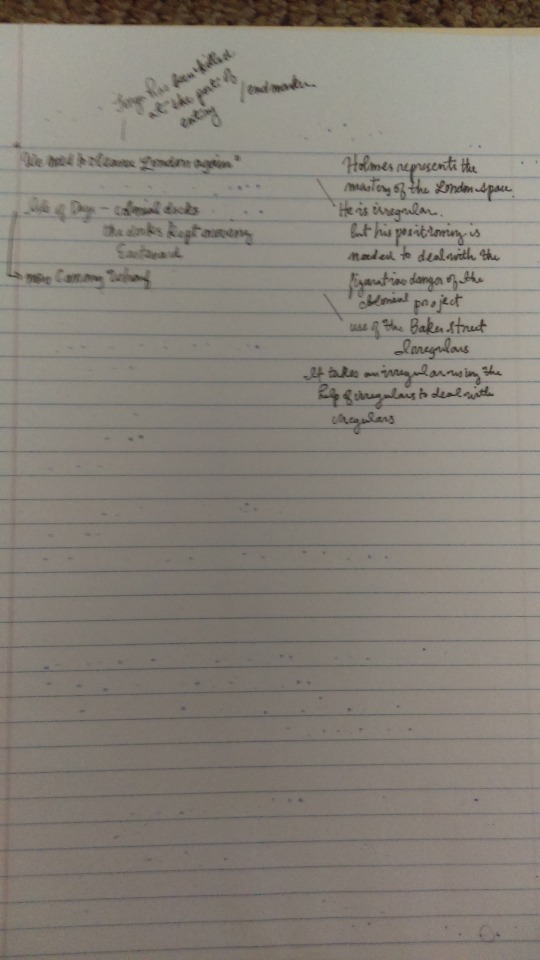
Sherlock Holmes is a queer fellow. I don’t mean queer in the sexual sense. He is queer in that he is irregular. When we consider the London in which his original series of stories transpire, we discover that the detective rests outside the increasingly rigid class and racial lines that defined late 19th century London.
Don’t get me wrong--Holmes is white, but his whiteness is complicated, goes against the idealistic notions of racial identity promulgated throughout Victorian London. In “The Sign of Four,” for instance, he indulges in drugs such as cocaine, a drug specifically rooted in the English colonial project. In order to solve the case of missing treasure and murder, he employs the help of the Baker Street Irregulars, a small gang frequently termed “street Arabs” that are “dirty.” Their non-whiteness provides them an advantage in that they are able to maneuver through the seedier sides of London without arousing suspicion. They gather what can be termed “insider” information for the detective that helps the detective’s cause, giving him the upper hand on the Scotland Yard, an institutional force frequently insulted, by Holmes, for the incompetency. Moreover, the detective is unafraid to venture into the lower levels of the city. On their way to meet Thaddeus Sholto, Holmes, Watson, and their client Mary Morstan (whom I’ll discuss later), venture to the “Surrey side” (106) of London. Watson expresses confusion, unable to get his bearings in this part of town. However, Holmes rattles off street names automatically, implying his experience with “questionable and forbidding [neighborhoods]” (106). Considering all this, we understand that Holmes rejects the idealistic notions of whiteness as a necessity, to be able to solve cases, to get shit done. Yet, he is still a white man. He may travel all over London, but he is still respected by the Scotland Yard. Athelney Jones of the Scotland Yard highly praises Sherlock to Watson, defining him as “a man who is not to be beat. I have known that young man go into a good many cases, but I never saw the case yet that he could not thrown a light upon” (147). From these commendations, we see Holmes attached to ideas of whiteness as a position of mastery, and of lightness. His irregularity is noted by Jones, but “on the whole” (147), Holmes would receive unconditional recommendation from Jones should he choose to join the Scotland Yard. However, he chooses not to because he is aware that the Scotland Yard is too clean to be effective. They serve as the superficial face of the state, able to control and fortify the nicer neighborhoods, but fumbling in the poorer, sketchier parts of the city.

(Above: Sir Edwin Landseer, Windsor Castle in Modern Times; Queen Victoria, Prince Albert and Victoria, Princess Royal, 1840-43, oil on canvas, 113.3 x 144.5 cm [The Royal Collection])
So what is the purest form of whiteness, who are the Scotland Yard, Holmes and Watson, trying to protect? White women, exemplified in the story by Mary Morstan. Morstan is pure, Morstan is innocent, Morstan is angelic, descriptors associated with whiteness. Morstan represents the “angel in the house,” the Victorian concept of white femininity. Watson makes her so in his recollection, noting:
“[as] we drove away I stole a glance back, and I still seem to see that little group on the step--the two graceful, clinging figures . . . the hall-light shining through stained glass . . . It was soothing to catch even that passing glimpse of a tranquil English home in the midst of the wild, dark business which had absorbed us” (127)
Conan Doyle, through the characterization of Watson, suggests that the “tranquil English home” and the ones who inhabit it, in this case, Mary Morstan and Mrs. Cecil Forrester, are to be protected. They protect something within the domestic sphere, they protect an idealized whiteness-purity, sophistication, divinity (“the hall-light shining through stained glass”). Yet, they are “graceful, clinging figures,” suggesting their physical weakness, and the necessity for white men, and the institutions they inhabit, to protect them. Curiously, idealized whiteness is feminized due to its connection with the domestic sphere.
#victorian#sherlock holmes#the sign of four#sir arthur conan doyle#london#19th century london#crime lit#whiteness
0 notes
Photo
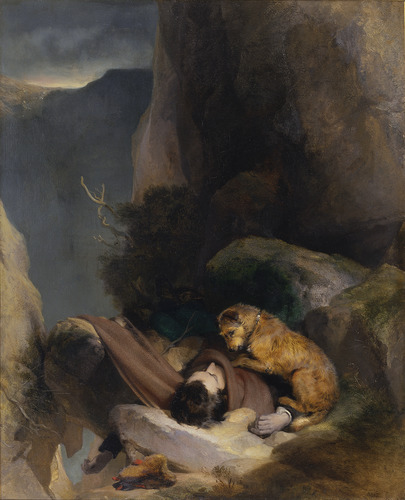
Attachment, Sir Edwin Henry Landseer, 1829, Saint Louis Art Museum: Modern and Contemporary Art
https://www.slam.org/collection/objects/16006/
60 notes
·
View notes